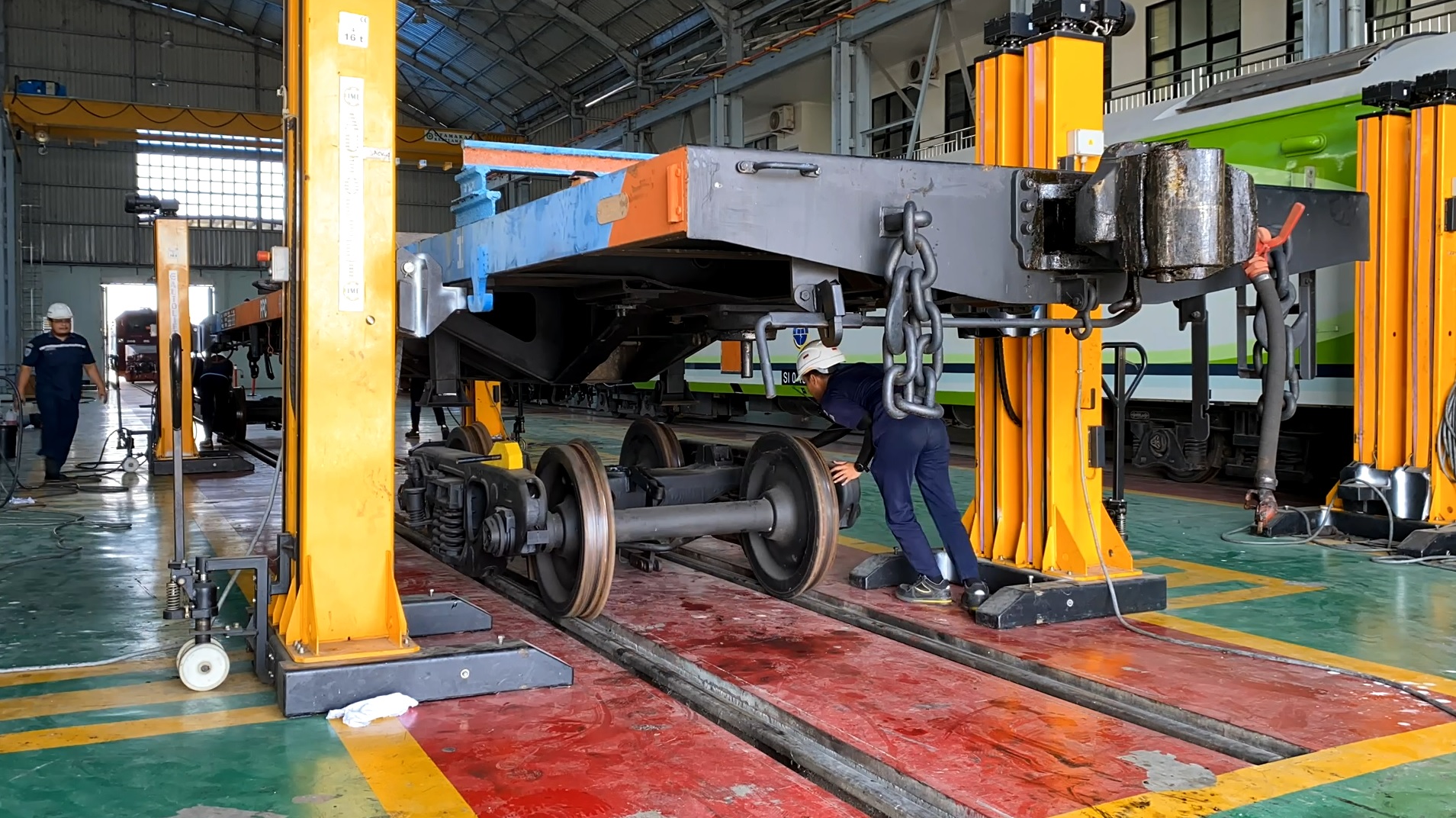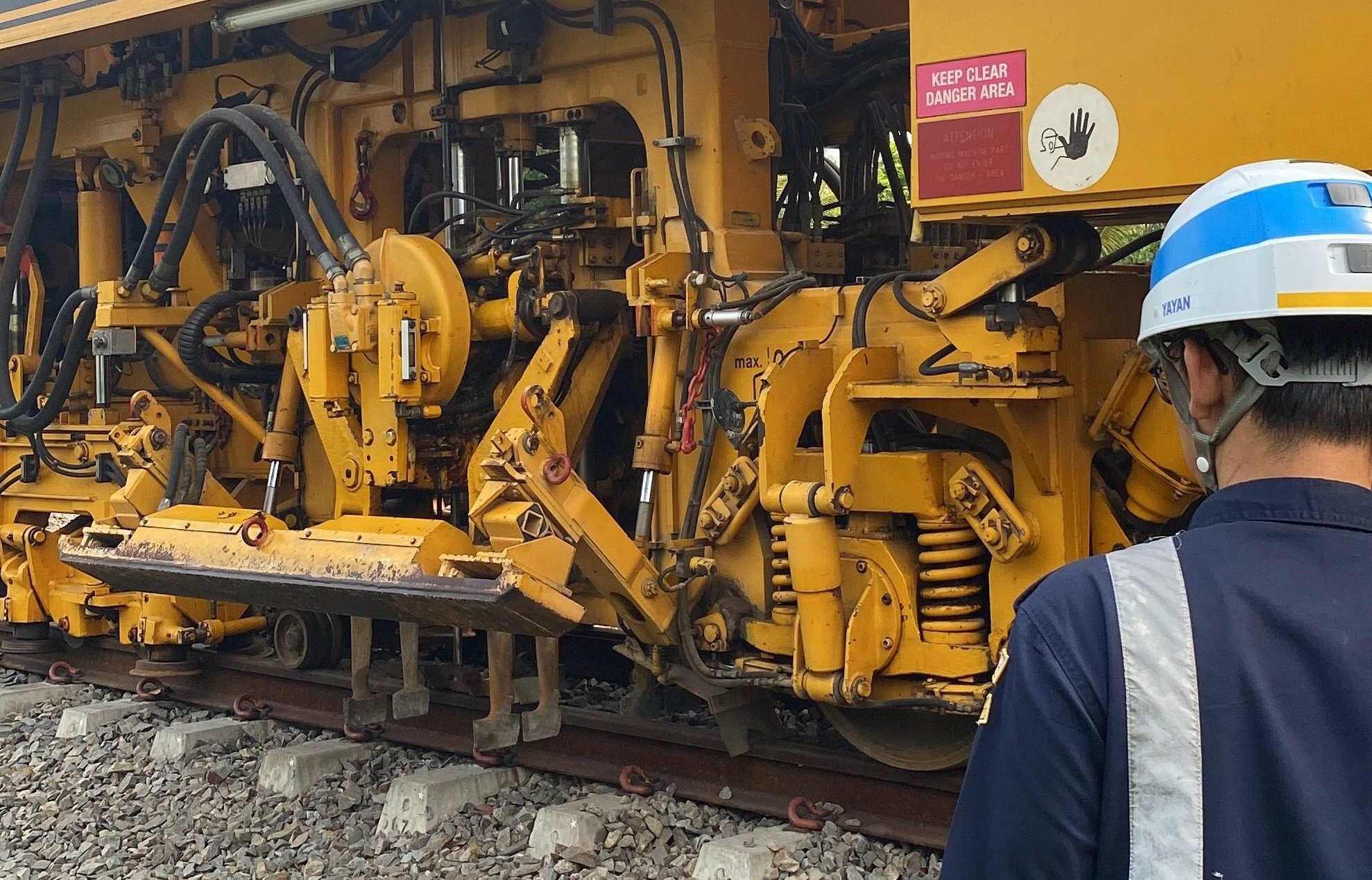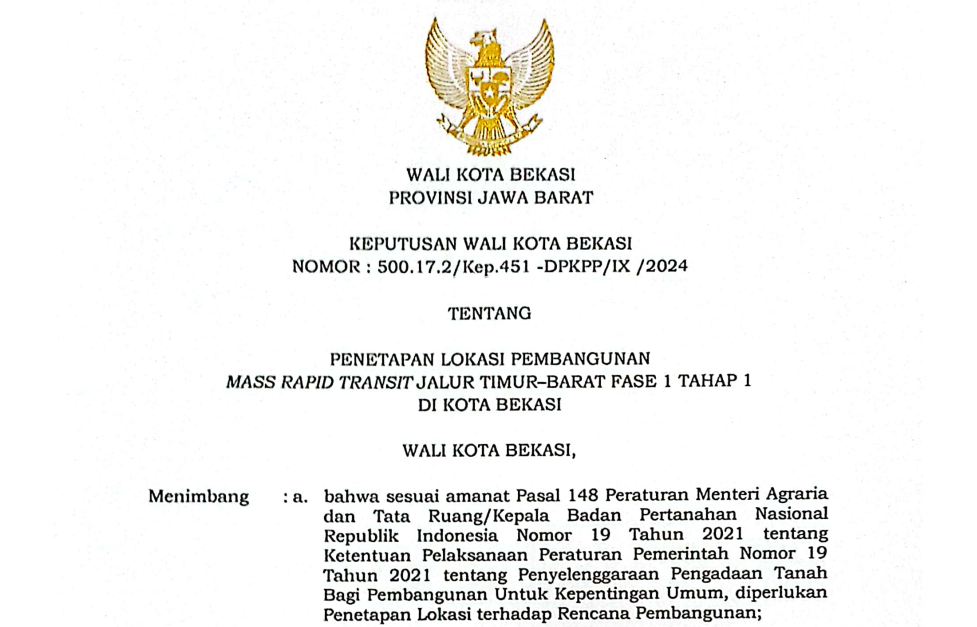P12 Nineteen Flat Wagons

Maintenance and upkeep of railway facilities is important to maintain the lifetime of the facilities themselves and to keep the railway facilities always in good condition. In general, care and maintenance can be carried out either at the location where the railway facilities are located, or by bringing the railway facilities into a maintenance facility.
Maintenance carried out in treatment facilities is carried out over several maintenance periods, one of which is annual maintenance or commonly referred to as P12. P12 is carried out to maintain all parts of the facility more intensively. P12 is usually carried out once a year according to the periodic maintenance carried out. In October 2023, a similar maintenance agenda is being carried out by the Railway Maintenance Center maintenance team for nineteen state-owned Flat Carriages located in the Railway Maintenance Center empasment.
Maintenance on the State-Owned Self-Driven Train (SMN KTB) was carried out on the second rail line in the Ngrombo Workshop building for 10 days, from 9 to 20 October 2023.
A flat carriage is a means of railway that is pulled or pushed by a locomotive, and functions to transport goods. The flat carriages being maintained during the annual maintenance period (P12) this time have the identities GD 40 09 01-09 (9 units) and GD 40 12 01-10 (10 units).
As explained above, the twelve-monthly maintenance of flat carriages aims to maintain and maintain the condition of the facilities, extend the life of the equipment/machines so that they are reliable when used, and are in a Ready for Operation (SO) condition.
In fact, P12 on flat carriages in 2023 is one of the facilities that is carried out self-managed maintenance by the Railway Maintenance Center. "This activity is proof that the Railway Maintenance Center's human resources as maintenance personnel for state-owned railway facilities have competence in their field, especially in terms of maintaining flat carriages in accordance with applicable procedures with attention to safety factors," said M Karil Samba, SMN KTB Maintenance Supervisor.
Maintenance begins by shunting the flat carriages that were previously stabilized on the seventh lane outside the east side of the Ngrombo Workshop building. The crossing is carried out using a DH CC 300 locomotive, using the money order facility at the end of the line which ends at the Ngrombo Station highway. The CC 300 locomotive moved the flat cars one by one from the seventh rail line to the second rail line. This second rail line has access to the Ngrombo Workshop facility building.
After entering the maintenance facility building, the maintenance team carries out SOPs according to their assigned roles. During observations in the field, the maintenance team initially removed the bogie fastening components and the top frame of the carriage above the undercarriage. After the fastening components are removed, then push the flat carriage to the Lifting Jack installation to lift the Flat Carriage body. After lifting to a sufficient level, the bogie components are moved to the maintenance area by pushing manually. Maintenance and inspections are carried out in more detail by the technical maintenance team.
The maintenance agenda is carried out based on a check sheet or inspection sheet. The checksheet basically consists of four parts, including the bogie, mechanical coupler, braking system and upper frame.
In the bogie section there are several components that need maintenance, including axle bearing, side spring, load spring, friction wedge, side bearer, wheel diameter, wheel profile, center plate liner thickness, side frame column, pin and bush wear, bogie and frame, bogie bolsters, side frame keys, bogie washing, and lubrication of rubbing parts.
Then in the mechanical coupler section, the component to be checked is the automatic coupler.
In the third part, the mechanical braking system has several parts to check, such as BP air pressure, full service brake function (automatic brake), parking brake function, visual emtyload device, air leaks, brake block thickness, distributor valve, slack adjuster settings, settings control head, stopper distance settings, brake block gap settings, brake cylinder pressure and stroke, condensation water discharge in the reservoir, brake rigging completeness, condition of the flexible hose (brake hose), and condition of the cock angle.
The final part, the upper frame consists of six components that must be checked, such as the 21 motto bracket, handle grap, completeness and lubrication of the twist lock, function and lubrication of the skamel (rail support tool), underframe, and touch up of damaged paint.
This periodic maintenance is carried out using railway maintenance support facilities and equipment, such as lifting jacks, ultrasonic flaw detectors, digital wheel back to back gauges, digital wheel profile gauges, analog wheel diameter gauges, and other maintenance support equipment.
After maintenance was carried out, the flat carriage was moved back to the eighth rail line at the Ngrombo Workshop using a DH CC 300 Locomotive.
Care and maintenance of railway facilities must be carried out regularly. If a railway facility is not regularly maintained, it will have an impact on the condition and performance of the railway facility itself. Railway facility maintenance procedures must also refer to guidelines and references based on SOPs, supported by maintenance equipment, the competency of the maintenance team, and previous repair history.
Maintenance of railway facilities needs to be carried out at certain intervals based on the operational hours of the railway facilities themselves. However, apart from maintaining railway facilities based on certain periods, sometimes there are repairs that must be made when railway facilities experience sudden problems while being operated. So as a mitigation measure for railway facilities that are not ready for operation (TSO), periodic maintenance needs to be carried out in an orderly manner, as in the P12 example which was carried out on the Flat Carriage above. (yogo)






.jpg)




Komentar
LOGIN FOR COMMENT Sign in with Google